*******
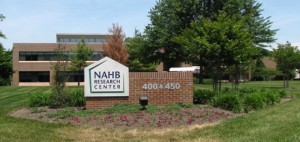 The rally cry Road Trip! seemed to ring loudly as I read Barry’s reply on my monitor. We had just received an email confirming an upcoming visit to the NAHBRC. It would be a good opportunity for he and I to finally connect. A great opportunity for the two of us to tag-team a knowledge building exercise (or . . . is that a . . . “building knowledge” exercise?).
The rally cry Road Trip! seemed to ring loudly as I read Barry’s reply on my monitor. We had just received an email confirming an upcoming visit to the NAHBRC. It would be a good opportunity for he and I to finally connect. A great opportunity for the two of us to tag-team a knowledge building exercise (or . . . is that a . . . “building knowledge” exercise?).
You see, The National Association of Home Builders Research Center aka the NAHBRC, and a beacon of housing science, is just down the way from me in Upper Marlboro, MD. They invited us down for the day, and Barry would be making the trip up from the . . . slower . . . lower . . . Delaware shore.
Update: I am not exactly sure when but NAHBRC has re-branded to Home Innovation Research Labs.
*******
Improving Building Products
Established in 1964, and remaining still as a fully-owned subsidiary of the National Association of Home Builders, the NAHBRC enjoys a unique insider’s relationship with the housing industry. The for-profit institution has evolved through the years and works today under the primary mission to improve the quality of, as well as the durability, affordability and environmental performance of our nation’s housing stock.
The Center’s crown jewel — a 42,000 square foot research lab; we would be touring it that day — our guide, Bob Hill, the Center’s Director of Laboratory and Certification Programs.
Serving the Industry
As we walked the still newish building (not yet three-years old), we saw many things I would expect to see in a building research laboratory. We saw large machinery used to perform shear wall testing. We saw cannons that shoot 2x4s. And we saw chambers designed to measure air flow and heat resistance, the U-factors and R-values of things. All . . . really cool stuff.
But it was the Center’s unique blend of capabilities that instead stood out and surprised me the most. To use the words of my cohort, the b (Barry) – and he posed the question to Bob, “So you are kinda like the bridge?” In this case, the bridge between the builder — here, the consumer and “the people that make stuff” — product manufacturers.
And I think Barry nailed it. To this, Bob replied, “. . . our broad mission is to serve the industry. We do this primarily by championing innovation. As the manufacturer (general) is developing new products, and if those products are innovative, we work to get them into the marketplace and accepted.
*******
But Providing Certification for Private Entities
The large campus is not only home to in-lab and applied technology studies, but it also serves as headquarters for the Center’s field evaluation and market researching efforts.
And despite my first instinct, the Center does not derive a majority of its work from the NAHB‘s 200k-plus membership. While they perform some research for the Association (usually in preparation for a weigh-in on a code change) as well as contract and consulting work for government agencies such as the DOE, the EPA and HUD, the NAHBRC works most frequently for private organizations, in most cases as mentioned above, product manufacturers.
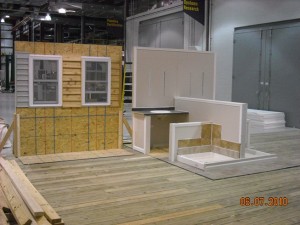 Taking Research to New Heights
Taking Research to New Heights
For the first part of our tour, Bob ushered us through a set of rooms equipped with one-way mirrors. (And yes, Bob the engineer could tell me how a one-way mirror function is accomplished.) From a hidden location and in a focus group setting, clients may watch as selected participants (sometimes drawn from NAHB membership) interact with facilitators on pre-determined topics.
These options extend traditional survey-based market research techniques to form a singular approach to housing study. The uniqueness of which did not become fully apparent until Bob lead us into the largest of the Center’s observation suites, located some 20 feet above the lab’s floor.
Focus Groups
When asked Bob replies, There is frequently overlap between what is going on in the focus groups and what is going on in the lab. Immediately below and while looking down from the second floor, we see two mock ups. These, one of a bathroom, are not unlike vignettes you might see on a supplier’s showroom floor. To describe the observation deck itself — Picture a luxury sky box at a ball stadium fitted with hi-set tables and hi-end bar stools, but with a view wrapped totally in one-way mirrors.
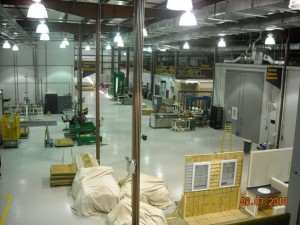 Focus group participants are sometimes lead down to the lab floor for real world trials on a given product (or set of products). Bob used the example of a paint manufacturer looking for feedback on selected paints. Group participants could apply a variety of coatings to a grouping of wall sections constructed specifically for tests on usability.
Focus group participants are sometimes lead down to the lab floor for real world trials on a given product (or set of products). Bob used the example of a paint manufacturer looking for feedback on selected paints. Group participants could apply a variety of coatings to a grouping of wall sections constructed specifically for tests on usability.
These exercises give manufacturers insight into what customers want, what they like and don’t like, often before a product is sent to market and usually across segments of the industry, i.e. via business owners as well as from their technicians.
The Lab Floor Feels Quite Like a Movie Set
It is perhaps that lab’s research floor – especially for a pair of building geeks like b and I that is most impressive. In one word — “Wow.” The pictures probably do not do the floor justice. But at the far end, many side-stations set off along the way, integrated bolt-downs allow for the anchoring of a full two-story structure. On that day, a trussed roof sat at this location, it — a casualty of a recent wind uplift test.
ANSI + Physics, Chemistry & Science in General
Of the laboratory floor itself, it felt at times like a home improvement warehouse; at other times, it reminded me more of a chemistry lab. Best described though as like a studio’s movie set. But don’t be fooled, boxes of safety glasses and hard hats sit on a small table just inside the floor’s entrance. It is the real deal.
The Center performs 3rd party product certification on OSB, insulation (blown and batt) as well as on plumbing fixtures such as whirlpool tubs, shower/tub enclosures, and kitchen and bathroom sinks. Maybe you have seen the label – looks familiar to me – and . . . as b interjected, It is interesting to see just how much goes on behind the label.
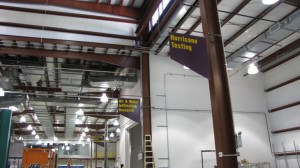 A set of closed loop plumbing systems (designed by engineers at the Center) repeatedly cycle hot and cold water through sinks. Fixtures ran through these tests are later cut up, burned, baked, scrubbed and marked. All tests performed to ANSI and other standards. As Bob puts it, “Lots of beautiful stuff sadly ends up in the dumpster after these tests.”
A set of closed loop plumbing systems (designed by engineers at the Center) repeatedly cycle hot and cold water through sinks. Fixtures ran through these tests are later cut up, burned, baked, scrubbed and marked. All tests performed to ANSI and other standards. As Bob puts it, “Lots of beautiful stuff sadly ends up in the dumpster after these tests.”
In the Field Studies
Independent third-party sampling also performed in the lab closely mimics real world and in the field circumstances. We discussed this while standing near the Center’s wind-blown rain chamber, itself — a large steel box allowing for the monitoring of air infiltration through different wall set-ups. Clients, including window and door manufacturers, frequently want to know how their products perform in different configurations and under varying conditions.
For Remodelers and Those Interested in Green
Bob a career engineer joined the Research Center nine years ago, but he still agrees that they do some fun stuff. When asked what he likes most about his job, Bob replies plainly, “Being involved with leading edge technology, and well, (short pause) breaking stuff.”
He does admit that it isn’t quite as glamorous as one might think, and he shares a short story that reinforces this. He tells of a time when many gathered to witness a test on a concrete structure waiting for a battery of some 400,000 pounds of force. The test however concluded when a small crack developed ending it with nothing near catastrophic excitement. (Awww!)
*******
National Green Building Standard
Be it field evaluations, market investigation or technical testing, ultimately the NAHBRC works to facilitate new product acceptance. When I asked what the Center has to offer for remodelers, Bob says, There is a lot of overlap actually (between applications for remodelers and builders). But . . . there seems to be lots of interest from remodelers in the green area these days . . . .
Later he continues, People come to us wanting to do ‘green’ tests. I ask . . . but what standard am I testing to?” Apparently, not much in the way of green testing standards exist presently.
The NAHBRC is doing its part to add inertia to this movement, though. As an ANSI-accredited standard’s writing institution, the NAHBRC acted as secretariat to the 42-member panel that authored the National Green Building Standard (ICC 700-2008).
Bob is sure to point out that the Standard is fairly far reaching in that it is ANSI-approved, is very compatible with renovation activity and has a totality of method. Meaning – All ratings are interconnected. One must go up in all six graded areas to move up a level on the scoring scale.
*******
I’d like to thank Bob for taking the time to meet with us. Please look for audio outtakes from b (The Barry) recorded during our visit.
More Moxie (Related Links)
For more info on the NAHBRC, check out this vid: http://www.youtube.com/watch?v=9Lw2af5Ubpg
For a little on the history of the NAHBRC, this vid: http://www.youtube.com/watch?v=to_YLJQXzX0
For information on the NAHB‘s National Green Building Program & access to the Standard’s one cool Scoring Tool: http://NAHBGreen.org
More tours with the Building Moxie team, please also see our Tours category.
Outtake
We talked briefly of the Center’s Home Park. Located only a short distance from the Center’s campus, it contains 25 lots that have been slowly built on through the years. To me — totally intriguing; I envision 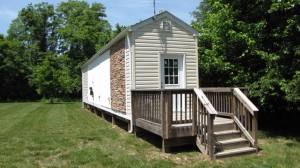 a community of houses that itself would create a document of building technology through recent years.
a community of houses that itself would create a document of building technology through recent years.
Bob does note the sponsorship of homes by the Gas Institute and by the Concrete Institute, a house built almost exclusively from recycled material as well as the construction of a string of four townhouses – one using structural insulated panels, one using insulated concrete forms, one use conventional framing and one steel framed.
Once constructed, the Center instruments and performs time in motion studies on these structures. This activity is similar to that being performed on a set of test huts found right on the campus. The Center is monitoring moisture retention in various siding materials . . . the performance of each will be tracked for two years.
All houses in the Home Park remain open to the public for some time before they are ultimately sold. On the day of our visit – it was our understanding that the Center had recently sold its last, but may be building more in the future.
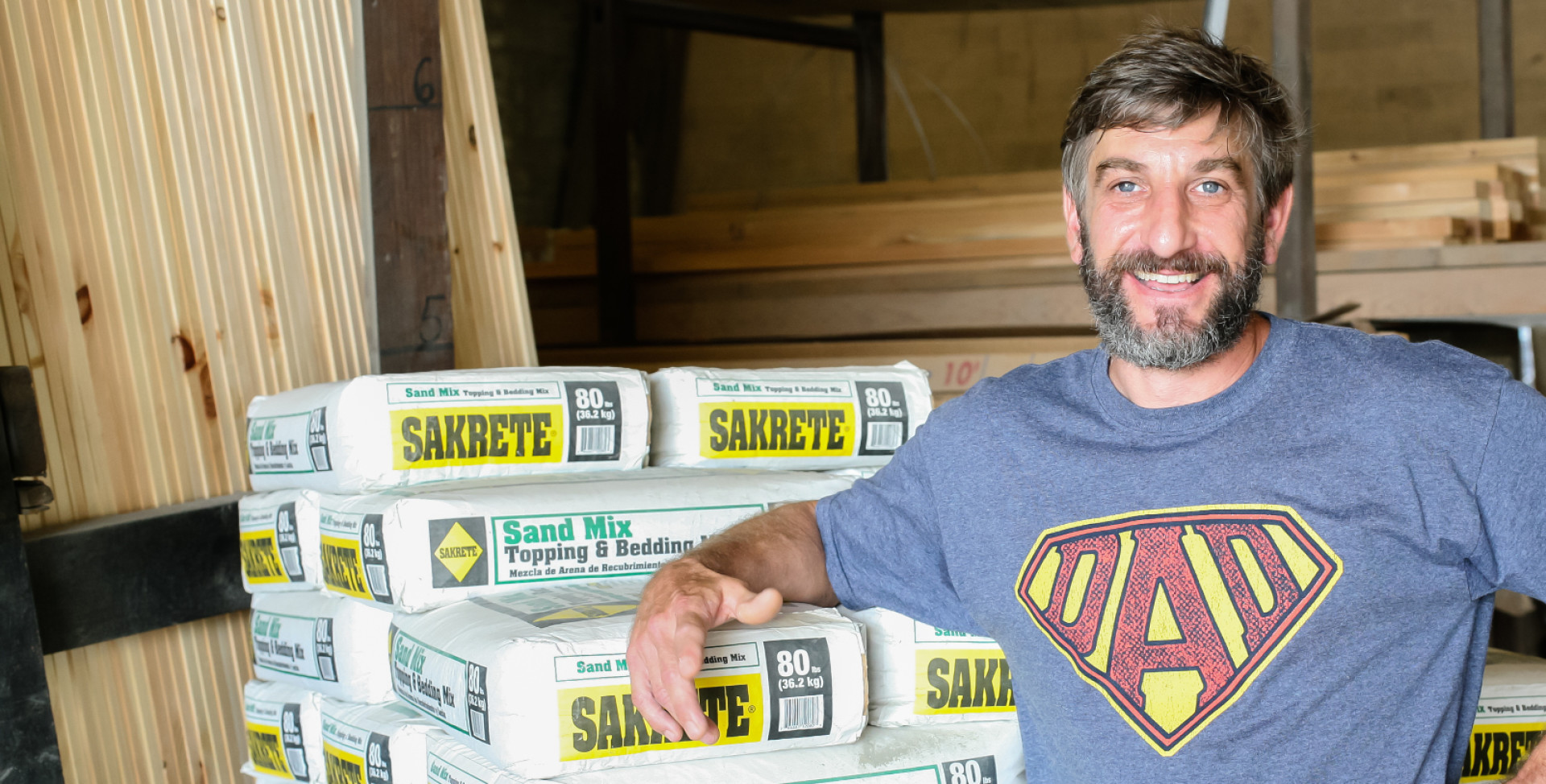
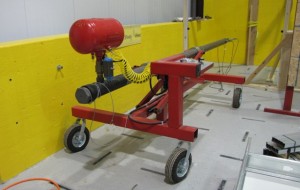

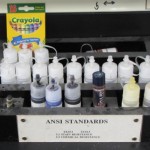
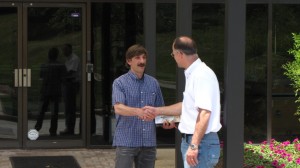
jb & b,
Excellent piece and great review on the NAHBRC. Learning of the behind-the-scenes effort that goes into designing products and systems (for construction or otherwise) is always enlightening.
Thanks,
Mike
Thanks Mike it was fun and great to meet (and work) with Barry finally. By far, my most labor intensive article to date. I hope I did it justice. great day sir.